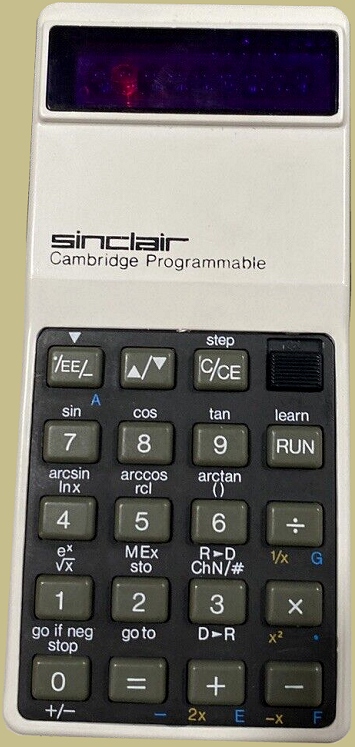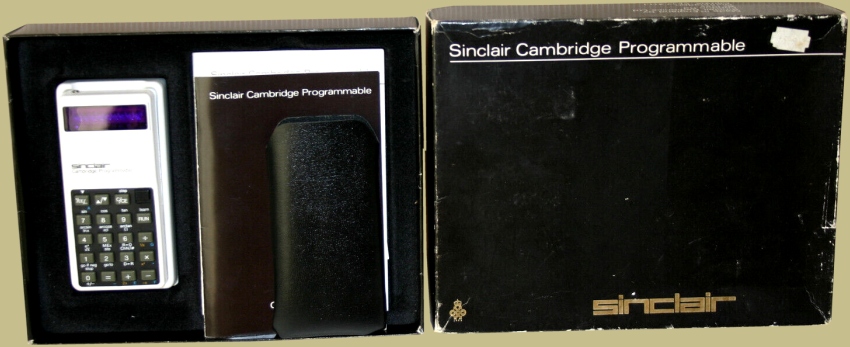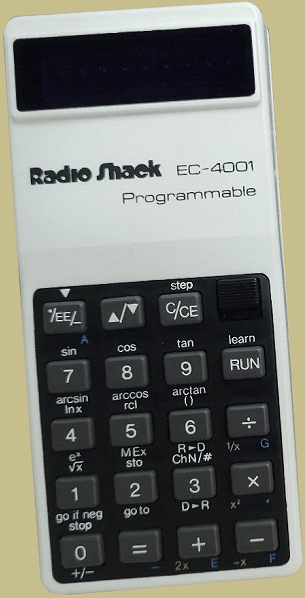
In the early 1970s, electronic calculators were just starting to become affordable and portable. Many companies rushed to bring these revolutionary devices to consumers and professionals alike. In 1973, British consumer electronics company Sinclair Radionics made a splash when they released the pocket-sized Sinclair Cambridge calculator.
The original Cambridge performed only the four basic arithmetic functions of addition, subtraction, multiplication, and division. However, Sinclair rapidly iterated, releasing improved models like the Cambridge Scientific and Cambridge Memory within the next two years. Then in 1975, Sinclair unveiled their most advanced calculator yet – the Sinclair Cambridge Programmable.

Despite its miniscule size at just 4.5 by 2 inches, the Cambridge Programmable packed an impressive array of features. It supported the full gamut of scientific functions and had a single memory register for storing values. But most importantly, it was programmable, allowing users to write and execute their own programs directly on the device.
The Programmable could store up to 36 steps in its program memory. It supported both conditional and unconditional jump instructions, providing flexibility and control flow for programs. Users could step through program execution one line at a time, checking for errors. The “learn” key enabled fixing bugs without having to erase and restart the entire program.
To help users take full advantage of the Programmable’s capabilities, Sinclair provided an optional 294-program library spanning mathematics, statistics, finance, physics, engineering, and more. Without having to code themselves, users could simply enter programs for their specialty from the library books. This accessibility to pre-made programs was groundbreaking. The four books in the program library were available at $4 each, or $10 for the complete set.

The Programmable featured an 8-digit LED display that showed results in scientific notation. To fit the extra digits, the mantissa had 5 digits while the exponent had 2. The LED display delivered accuracy, but it also consumed significant power. As a result, the Programmable required a larger battery that created a visible bulge on the back casing.

Remarkably, despite its significant capabilities, the Cambridge Programmable retailed for just $29.95. Sinclair’s direct-to-consumer manufacturing and sales model with no distribution middlemen enabled this disruptively low pricing. The Programmable brought professional-level programmable calculating down to the average consumer.
However, the Programmable was not without flaws. It often yielded incorrect outputs, especially for advanced transcendental functions. Precision was limited to just 4 significant digits in many cases. But historical context is important – in the mid-1970s, having a programmable calculator at all was revolutionary.
The Sinclair Cambridge Programmable advanced portable calculating in terms of programmability and access for the masses. It paved the way for future models like the Sinclair Enterprise, which improved upon many of its limitations. The Programmable stands as an innovative milestone that helped bring programmable computing power into the hands of professionals and hobbyists alike.
The Sinclair Cambridge Programmable was sold in Radio Shack electronics stores across the United States under the name EC-4001. Radio Shack’s expansive retail presence enabled the advanced programmable calculator to be purchased not just via mail order, but conveniently in Radio Shack stores around the United States.

The Sinclair Cambridge Programmable holds an important place in the evolution of calculators. It pioneered pocket-sized programmability and accessibility for the average consumer. Despite flaws in accuracy, the Sinclair Programmable brought power once exclusive to professionals down to the masses. Its innovative features and disruptively low pricing made computing more personal and portable. The Programmable inspired and paved the way for future programmable calculators that further democratized advanced calculating capabilities. By putting programming directly in users’ pockets, the Sinclair Cambridge Programmable helped usher in a new era of portable computing for all.